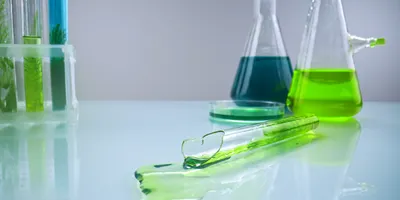Physical hazards in the lab are risks associated with the lab's tools and environment. Physical hazards are often identified around these groups: electrical, mechanical, noise, temperature, vibration, ergonomics, and slips, trips, and falls. Chemical and biological hazards are often top of mind for lab safety, making these physical hazards sometimes underappreciated. Unseen hazards, such as electrical hazards, noise, and temperature, are sometimes underestimated or not given sufficient thought to ensure staff safety. Ergonomic and mechanical hazards are often accepted because the lab activities associated with them become habitual. Here are five tips to help you keep your lab staff safe from physical hazards.
Walk through the lab
Institute regular lab safety inspections. Simply walking through the lab brings new eyes to the equipment, setup, and environment. These inspections can be done with staff from other parts of the lab or by the leadership team. Formal inspections can be done monthly, and management walk-throughs can be done weekly. This can be part of a management-by-walking-around (MBWA) approach. These walk-throughs can identify risks before they lead to an injury. When doing an MBWA sweep, take the time to look for hazards and risks that the lab staff may have overlooked or ignored. Work with them to correct the issue in the moment.
Require equipment guarding
Physical hazards from tools and equipment can be minimized with appropriate shielding and guarding. Many scientists think they can remove the interlocks and guards to manipulate materials or make specific changes to operate the equipment. Ensure that all staff using equipment with physical hazards understand why guards and interlocks are in place and that they do not operate the equipment without them. Use signage and lock-out tag-out to prevent equipment from being used until the guards are in place.
Competency-based training
Ensure that staff are properly trained to use equipment with physical hazards. Merely seeing the equipment in use or shadowing an experienced user is insufficient. Keep a training or proficiency matrix that documents everyone proficient in using each piece of equipment.
Address ergonomics
Talk to staff and observe their use of lab equipment. Listen to their ideas about discomfort working in the lab and take action to reduce unnecessary stress and strain while they complete their tasks. This could involve improving computer workstations, adjusting the heights of equipment tables, rotating tasks like pipetting, and locating items within neutral reach. Work to prevent repetitive use injuries, rather than recover from them.
Investigate near misses
Near misses are important sources of information about the lab’s safety program. They can be leading indicators of where risks have not been sufficiently mitigated. Work with staff to celebrate near misses and investigate thoroughly. Celebrate them because no one got hurt, and investigate them to mitigate risks better and prevent injuries. Highlighting near misses will improve lab safety performance, the lab’s safety culture, and psychological safety around the lab. Ignoring them sends the message that lab management doesn’t really care about safety.
Embark on a transformative journey in lab management with the Lab Safety Management Certificate programs from Lab Manager Academy. We understand the challenges you face in driving productivity and exceeding quality goals, and we're here to support you every step of the way. Our programs empower you to overcome resistance to change, nurture a culture of safety, and drive improvement within your lab, all while fostering a culture of warmth and collaboration. Embrace generative leadership and the valuable insights of diverse voices as you guide your lab toward enduring success. Your lab's brighter future starts right here, and we're excited to be part of your journey. Discover more about the Lab Safety Management Certificate programs here.













